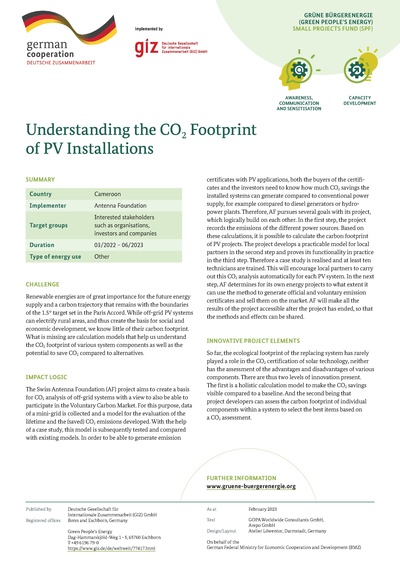Knowledge fuels change
For over a decade, Energypedia has shared free, reliable energy expertise with the world.
We’re now facing a serious funding gap.
Help keep this platform alive — your donation, big or small, truly matters!
Thank you for your support
Understanding the CO2 Footprint of PV Installations
Understanding the CO2 Footprint of PV Installations
Key Data
with PV applications, both the buyers of the certificates and the investors need to know how much CO2 savings the installed systems can generate compared to conventional power supply, for example compared to diesel generators or hydropower plants. Therefore, AF pursues several goals with its project, which logically build on each other.In the first step, the project records the emissions of the different power sources. Based on these calculations, it is possible to calculate the carbon footprint of PV projects. The project develops a practicable model for local partners in the second step and proves its functionality in practice in the third step. Therefore a case study is realised and at least ten technicians are trained. This will encourage local partners to carry out this CO2 analysis automatically for each PV system. In the next step, AF determines for its own energy projects to what extent it can use the method to generate official and voluntary emission certificates and sell them on the market. AF will make all the results of the project accessible after the project has ended, so that the methods and effects can be shared.
So far, the ecological footprint of the replacing system has rarely played a role in the CO2 certification of solar technology, neither has the assessment of the advantages and disadvantages of various components. There are thus two levels of innovation present. The first is a holistic calcula�tion model to make the CO2 savings visible compared to a
baseline. And the second being that project developers can assess the carbon footprint of individual components within a system to select the best items based on a CO2 assessment.- Mini-grids
Location




















